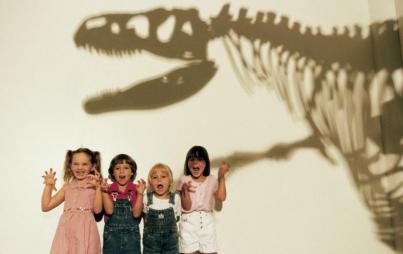
Calling all Floridians: Don’t look now, but you are possibly being stalked by a “Skunk Ape”!
Skeptical? You’re letting mainstream science pull the wool over your eyes, man! It's recently come to our attention that the self-proclaimed “Jane Goodall of Skunk Apes” is hot on the heels of an Everglades creature he predictably describes as “a man, but completely covered with hair.”
This is the latest in an incredibly long list of mythical beasts that pony-tailed, amateur biologists the world over are desperate for us to believe in (and we kind of want to!) Bigfoot, Loch Ness Monster and the Yeti are man-monsters that have long-captured our imaginations, but there are also mermaid-like creatures, snake humanoids, a variety of claimed dinosaur-sighting’s and so many more!
There are entire reality shows dedicated to showing hicks hunting down mountain monsters, and mythical beasts are common focuses of shows like Destination Truth and Into the Unknown.
All of this begs the question: why are we so hell-bent on finding such a specific kind of beast supposedly forgotten in history?
If it was simply about the discovery of new species, these reality stars could probably find a handful fairly easily. Scientists continually discover new life in rain forests, the ocean and other remote areas throughout the world. But tiny frogs, anemones and bats don’t seem to do it for us. We want humanoids. Or dinosaurs.
Why? I have two working theories:
1. Maybe this reflects a yearning for prehistoric life—when the earth seemed more epic — and dinosaurs, crazy big mammals, and various modern-human ancestors and cousins roamed the earth. It was a time when life was about the literal survival of the fittest, not about navigating Kafkaesque bureaucracies and sitting in cubicles all day.
Also! The (non-lizard) fascination often hones in on its bipedalism. If we simply wanted to know more about intelligent creatures closely related to humans, we could all study apes (or pigs!) a lot more. But apes are hunched over, climb trees, and use their arms to scanty about and pigs, well, just lie around in sh*t in all day right? We favor upright creatures—beings that echo our intelligence and gait — but exist outside "society" and instead, thrive in "nature."
2. Zeroing in on the redneck component, maybe it comes down to the thrill of the hunt. The psychology might mirror that of the “The Most Dangerous Game.” The 1924 short story tells of a crazed aristocrat obsessed with hunting, who ups the ante by hunting the worthiest opponent: other humans. Maybe we like the idea of searching for, and perhaps even hunting, beings that are as human-like as possible, while still seeming monstrous enough to give the hunt an animalistic bent. As for dinos, given the eons long cultural fascination with these ferocious-looking lizard beasts, again, maybe there’s a desire to outsmart and hunt the most dangerous mega-lizards of the past.
But then maybe I’m over-thinking it, and we just like big things that go roar. (Image: commons.wikimedia.org).






